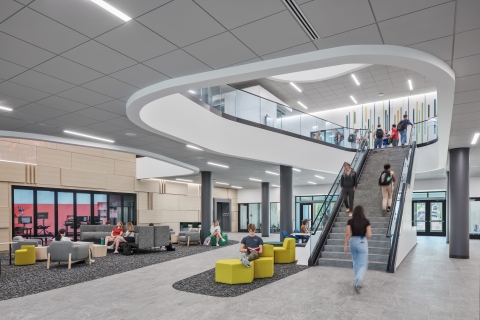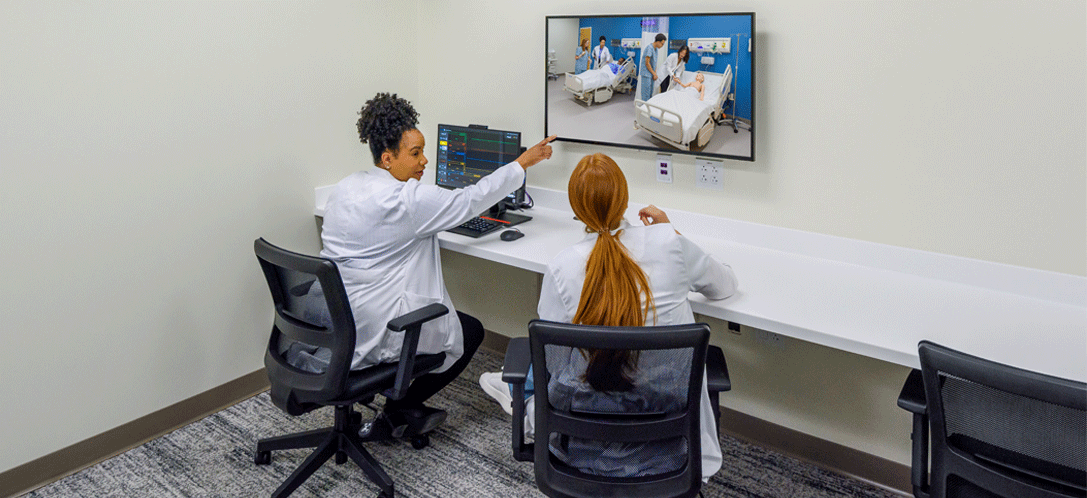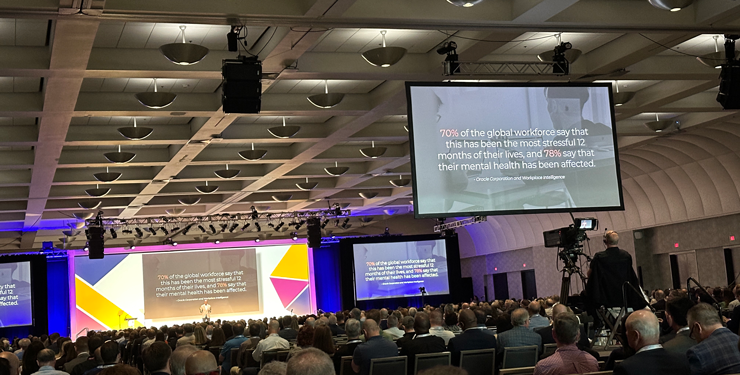
Bridging the Gap Between Theory and Practice Through Nursing Simulation

Nursing education is a dynamic and challenging field that requires students to learn theoretical concepts and become proficient in practical skills in a real-world setting. Simulation-based learning is one of the most effective ways to bridge this gap between theory and practice. When designed with functionality in mind, simulation spaces can significantly impact future nurses' success and longevity in the profession by providing real-world learning spaces that students will encounter as healthcare professionals.
Realistic Simulation Settings Enhance Learning
The key to simulation training is that it allows students to repeatedly practice skills in a controlled setting, fostering proficiency and confidence for real-world application. Simulation spaces that closely mimic healthcare environments offer valuable opportunities for students to apply their knowledge and skills effectively. These spaces can replicate various healthcare settings, such as hospital wards, emergency rooms, and clinics, allowing students to practice different scenarios they may encounter in their nursing careers.

Realistic learning experiences, where students manage multiple patients and must balance their needs, are pivotal for optimal skill development. Incorporating elements such as code blue lights, hospital noises, and scents into the design can simulate the high-stress situations often encountered in hospital settings. Additionally, features like a front desk with a unit secretary and a functioning call system can add authenticity to the simulation. While these details may seem minor, they are crucial when creating a space that mirrors a real-world healthcare environment. The sense of security and the protected environment fostered by such designs not only enhance student's self-esteem and confidence but also significantly reduce the gap between theory and practice.
Key Design Factors in Simulation Centers
Debriefing: A critical space for a successful simulation learning experience is the debriefing room, large enough for the biggest group to be seated and hear the introduction to the simulation that will occur. This space also serves to debrief students on what they did correctly and, more importantly, what they need to improve to gain proficiency in the specific skills performed during the simulation. The debriefing room needs the technology to display AV simulation recordings, and the space should be designed with soothing colors and finishes, as students often get emotional during debriefing sessions. The debriefing room may or may not be within the simulation suite. Still, it should be close enough that students can enter and return quickly after the introduction and simulation experience.
Pathways for Standardized Patients: Standardized patients are real-life human beings who are paid for their time and requested to come in and work through different scenarios. Standardized patients should have clear pathways to enter the suite and access their changing and break areas. The corridor system should allow them clear access to changing and break areas into the exam rooms without crossing paths with the students or going through public areas (since they often are gowned). These standardized patient facilities must be large enough to accommodate the number of standardized patients likely to be at once. If possible, a Green Room should enable standardized patients to apply moulage, put on clothing required for a specific simulation, and mentally prepare for their role. In addition to standardized patients, other actors play family members, who are essential for nurses in learning how to cope with patient and family interactions.
Control Rooms: Control rooms may be decentralized or central, but an instructor must have the capability to direct what happens in each room. One control room is often located between two exam rooms, but it may also be remote. Control rooms adjacent to exam rooms need a one-way mirror to allow the instructor to view the simulation fully.
Technology: The integration of audio-visual and information technology is paramount for the effective functioning of a simulation center. It is essential that as students interact with simulated patients, their approach, use of diagnostic and treatment procedures, and communication skills are readily observable to instructors. This is typically achieved through the use of cameras or a one-way mirror. Recordings of these interactions, which capture both the caregiver and patient, are invaluable for post-simulation review and can be played back in debriefing rooms to facilitate group discussion and learning.

By engaging in hands-on simulation exercises, students can develop critical thinking skills, improve their clinical reasoning abilities, and enhance their decision-making capabilities. This immersive learning experience enhances their academic knowledge and prepares them for the challenges they will face in real-world settings during their future nursing roles.
Impact on Confidence and Competence
A well-designed simulation space can also significantly impact students' confidence and competence. Students can gain confidence in their abilities and feel more prepared to handle real-world situations by providing them with opportunities to practice in a realistic environment. This increased confidence can positively impact their performance in clinical settings and contribute to their overall success as nurses.
Additionally, simulation-based learning can help students develop competence in performing various nursing tasks and procedures. By repeatedly practicing these skills in a simulated setting, students can refine their techniques and improve their proficiency, ultimately benefiting patient care outcomes.
Longevity in the Nursing Profession
The impact of functional simulation spaces extends beyond students' academic success—it can also influence their longevity in the nursing profession. Nursing is a demanding profession that requires physical, emotional, and mental resilience. By experiencing realistic scenarios in a simulated setting, students can better understand the stressful challenges they may face in their nursing careers and develop coping strategies to manage stress and prevent burnout.
Furthermore, simulation-based learning can help students explore different areas of nursing and discover their areas of interest. This exploration can lead to a more fulfilling and sustainable career path, as satisfied nurses are more likely to stay in the profession long-term.
Conclusion
In conclusion, designing functional simulation spaces is essential for future nurses' success and longevity. These spaces provide students with realistic learning experiences, enhance their confidence and competence, and prepare them for the challenges of nursing practice by providing real-world learning environments to hone their nursing, teamwork, and communication skills. By investing in simulation-based learning, nursing schools can ensure that their students are well-prepared to enter the workforce, positively impact patient care, and have satisfying healthcare careers.
Let's bring your vision to life. Complete our contact form today.
Author
Content Type
Date
May 07, 2024
Topic
Nursing Education
Healthcare Design



